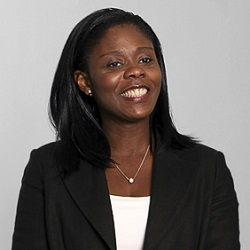
Mills: Euphoria of 2019 success has ebbed away
Discrimination is the “sole identifiable cause” for the paucity of Black barristers, particularly at QC level, a co-chair of the Bar Council’s race working group has argued.
Barbara Mills QC said there was no other “justifiable explanation” than race and systemic discrimination for the “obstacles to progress” that existed for Black barristers.
Ms Mills said: “The Bar cannot afford to keep looking away. While it may increasingly say it strives to represent equality and inclusivity, it currently does not look like the population it serves, and at the current rate, is unlikely ever to look like that society.
“Active steps will be required to ensure a levelling out of the playing field.”
Writing for the Bar Council’s Counsel magazine, Ms Mills, who specialises in family law at 4PB, said the proportion of barristers from Black, Asian and minority ethnic (BAME) backgrounds was 14% and QCs 8.8%.
However, “deconstructing BAME, the homogenous and deeply unhelpful shorthand”, revealed that Black barristers were “the least represented of all of the groups contained in the BAME category” and less likely than any other ethnic group to take silk.
Excluding all those silks who did not disclose their ethnicity, only 1.3% of QCs came from Black backgrounds, while White QCs made up 90.7%.
“In the 2019 competition, six Black women were recommended for appointment [Ms Mills was one of them]. It felt like the green shoots of change had finally sprouted but, sadly, the euphoria of that moment slowly ebbs away when you look at the very latest figures.”
In 2020, only one new QC was Black (out of 14 listed as BAME). The latest statistics provided evidence, “if evidence were required, that for progress to be made, the picture needs to be accurate and clear – there is no place for the term ‘BAME’ in the collection and sharing of data”.
Ms Mills said the next “glaring factor” to emerge was that Black applicants were “more likely to be filtered out prior to interview than members of any other group”.
Only a third of Black applicants progressed from the paper-sift to interview over the 2012 to 2020 period, compared to over 62% of Asian candidates or 71% of White candidates.
The QC said that “crucially, only applicants with reasonable prospects of being recommended, as evidenced by their assessors” were invited for interview.
“In other words, the first obstacle is that a silk application lives or dies on reputation. If the judges, practitioners and solicitors from an applicant’s selected cases do not say that that applicant is ready for silk, the chances of an invitation to interview appears to be vanishingly thin.”
Ms Mills said there were “wider issues of opportunity and progression” within the profession which discouraged Black talent from applying for silk.
“Clerks must consistently implement systems to ensure Black barristers (particularly women), get a fair share of the junior briefs.
“Without cases of substance, an applicant is unable to fulfil the criteria for showcasing their excellence in the silk competition. A culture change is required to ensure opportunity for capable Black talent.”
She said a further problem was that data from the Bar Standards Board on income by gender and ethnicity (based on 2018 income figures) revealed that Black barristers had the “lowest mean income band” of all barristers.
“It is not a coincidence that there is a prevalence of Black barristers in publicly funded, and therefore underpaid, work.”
Ms Mills noted too the correlation between civil, chancery and commercial sets and silk appointments – in the 2018 competition, for example, 71 of the 108 appointments were civil QCs and only 1-2% of such barristers identify as Black.
Further, “specific sets of chambers tend to do much better in the QC application process” – generally London commercial sets which have hardly any Black members
She said that although commercial sets of chambers had launched a mentoring scheme for underrepresented groups at the commercial Bar, “the speed of change will certainly preclude any timely or material difference at silk level”.
Earlier this month, figures showed that just 1% of judges were Black, a figure labelled an “absolute scandal” by shadow lord chancellor David Lammy.
















Leave a Comment